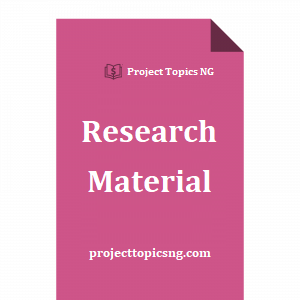Brief Introduction
The master key to the success of any institution (financial and non–financial) according to Henri Fayol in principles of management 1, is the effective management system. This could be achieved through the handwork of the director, managing director, management staff, and all other workers in the organization. The major role lies on the head of the board of directive (BOD) and managing directors.
Management according to Luther Gulick simply means the organizing planning, implementing, controlling, and directing of resources in an organization.
This study is based on financial institutions like banks, and there are two types of resources that can be found in a bank they are human and material resources. The material resource includes money and other inanimate objects found in the bank. Management is a personal thing that requires a personal touch
The purposes of the study are as follows
- To find out the cause of mismanagement in banks
- To study how it is executed by the appointed officers and staff of banks
- To know its influence on the banks affected and the government
- To determine whether it affects the economy of the nations
- To find out the means that can be adopted by banks to solve and put out the mismanagement of resources
Table of Content
Title page
Approval page
Dedication
Acknowledgment
Abstract
Table of contents
CHAPTER ONE
Introduction
1.1 Statement of problems
1.2 Reasons for the study
1.3 Significance of study
1.4 Scope and limitation of the study
1.5 Definition of terms
CHAPTER TWO
Review of related literature
2.1 History of bank management since 1972
2.2 Requirement of good bank management
2.3 Achievement of good bank management
2.4 Meaning and causes of mismanagement in banks/ meaning
2.5 Causes of mismanagement in banks
2.6 Problem of bank management and people in banking
2.7 Effect of mismanagement in banks
CHAPTER THREE
3.1 Hypothesis
3.2 Methodology of study
3.3 Sources of data
3.4 Limitation of the study
CHAPTER FOUR
4.1 Data presentation
4.2 Analysis of data
4.3 Discussion of the result of the analysis
CHAPTER FIVE
5.1 Findings
5.2 Summary of findings
5.3 Conclusion
5.4 Recommendation
Bibliography


